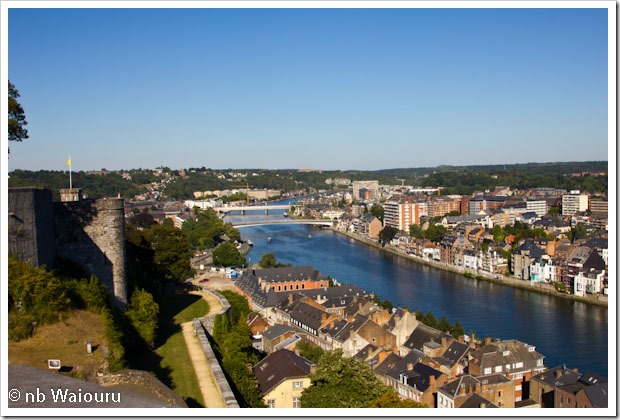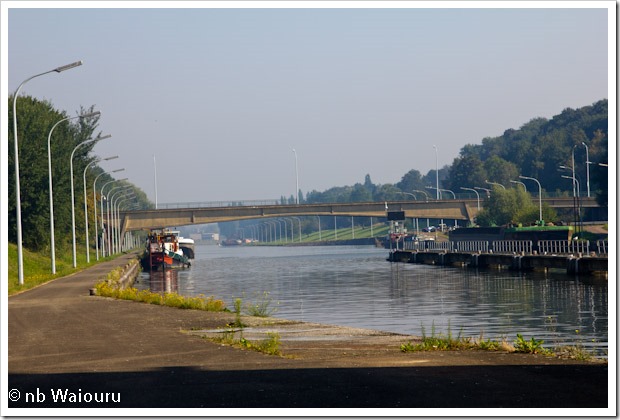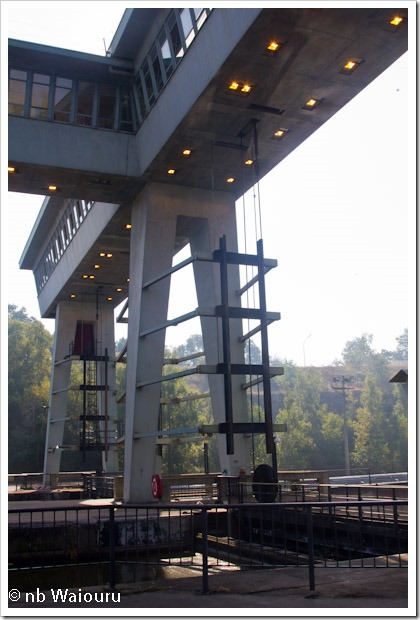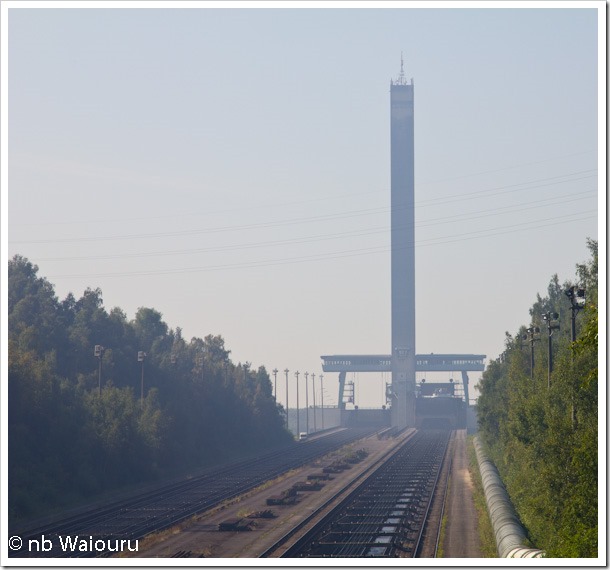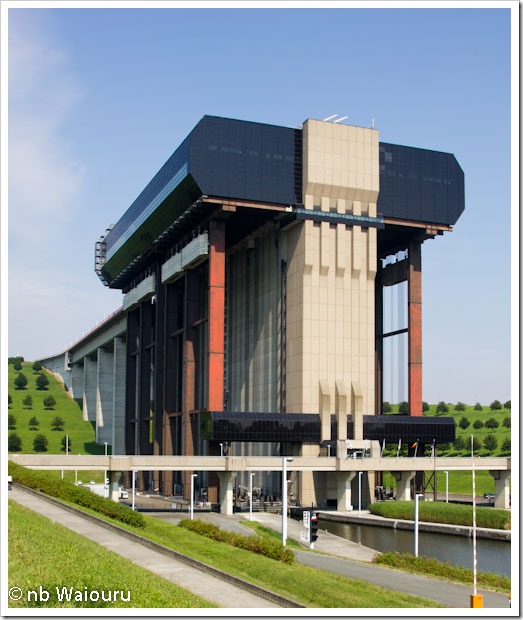Final day and I spent the morning driving around in the countryside. By now I’d discovered the Belgium's produce a rather nice range of beers. None of this warm and flat English muck (puts steel helmet on head and crouches in the bottom of the trench awaiting incoming fire). Some of the best beers were brewed in the nearby Abbeys and whilst I couldn’t drink and drive, I could at least look. The first Abbey was Chimay and the monks obviously have produced a popular range of beers over the centuries as they had a very nice looking visitor centre.

You can only watch others enjoying their beer for so long before you have to move on. I went looking for the nearby Abbey which involved (for me) a walk through the adjacent forest.

It’s actually Scourmont Abbey located near Chimay, although the beer is labelled Chimay. One locals in Charleroi had previously informed me that the monks produced beer because it was safer to drink than the water. It sounded like a great marketing strategy! The monks also produced cheese and I did wonder if this was part of the Belgium beer consuming culture as each time I ordered a beer it came with a small dish of cheese.


 Whilst it was possible to walk in the Abbey grounds there was no access to the brewery. However the smell of hops in the air suggested they did indeed brew on the premises!
Whilst it was possible to walk in the Abbey grounds there was no access to the brewery. However the smell of hops in the air suggested they did indeed brew on the premises!
The second brewery was at Rochefort Abbey. These guys are serious about their spiritual life (and beer). Gaining entry proved to be too difficult. There was a long suspended handle attached to a large bell beside the door but I decided against ringing it. You can see the bell in the following photo.
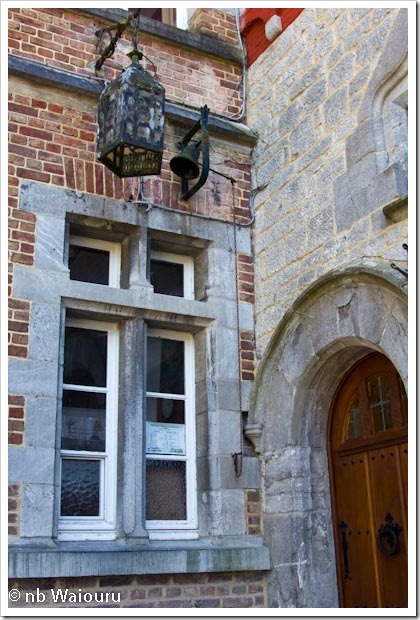
This small stone statue was in a niche high on the wall. I have no idea why the man and child are struggling over possession of the hammer?

The Abbey brewery has been the main source of income since the 16th century. In 2010 there was a large fire which destroyed much of the Abbey. Fortunately it didn’t touch the brewery…… or was this divine intervention! 
The final visit for the day involved climbing a hill. I’ve always wanted to visit the site of the 1815 Battle of Waterloo. This is where Napoleon was defeated for the last time and sent off into exile in the southern Atlantic. The Lion Mound was constructed after the battle on at the direction of the King of the Netherlands. His son had fought at the battle commanding the 1st Division.

You can read about the battle here.
This is the view to the east and was the Duke of Wellington’s left flank. To the right in the photo below would have been a small group of farm buildings which were occupied by the British as a strongpoint. The buildings have now gone. You can see the slight ridgeline running east to west.
 This next photo is taken from the middle of the English line and faces south. Napoleon’s forces occupied the ridge in the distance and there was a very shallow valley between the two parallel ridgelines. The contours of the land have changed slightly as a result of farming, erosion and the earth removed to construct the Lion Mound. In the middle of the photo there would have been the farm buildings of La Haysainte which formed the second of Wellington’s strongpoints
This next photo is taken from the middle of the English line and faces south. Napoleon’s forces occupied the ridge in the distance and there was a very shallow valley between the two parallel ridgelines. The contours of the land have changed slightly as a result of farming, erosion and the earth removed to construct the Lion Mound. In the middle of the photo there would have been the farm buildings of La Haysainte which formed the second of Wellington’s strongpoints

This next photo shows the ground in front of Wellington’s right flank (view to the southwest) In the middle of the photo you can see the buildings that form Hougoumont Farm. This was the third strongpoint occupied by the allies.

Napoleon had already defeated the Prussians in an earlier battle and sent a third of his force to pursue them and keep them from joining Wellington. Meanwhile Wellington had chosen this ridgeline as his main defensive position. He did so because the previous year he had reconnoitred the area and knew the terrain. It’s a good defensive position. The three farms provide strongpoints that break up any frontal attack whilst providing the defenders with some protection. Napoleon’s artillery was mostly cannons rather than howitzers and they fire balls in a flat trajectory. The ridgeline Wellington’s forces occupied enabled him to keep much of his force on the reverse side of the hill out of Napoleon’s direct artillery fire.
The Prussian commander, Blücher had agreed to come and support Wellington and he managed to slip away from the pursing French and join Wellington at a critical point towards the end of the battle. Conventional military wisdom states an attacker needs to outnumber the defender by 3 to 1. Napoleon did outnumber Wellington, but not by those odds. Napoleon might have won if he had commenced the battle earlier, but the weather was against him so he was late.
At the base of the Lion Mound is a round building constructed in 1912 which contains a circular painted diorama of the battle. To the left of the building is what appears to be an empty swimming pool. It’s actually part of a huge underground visitor centre.


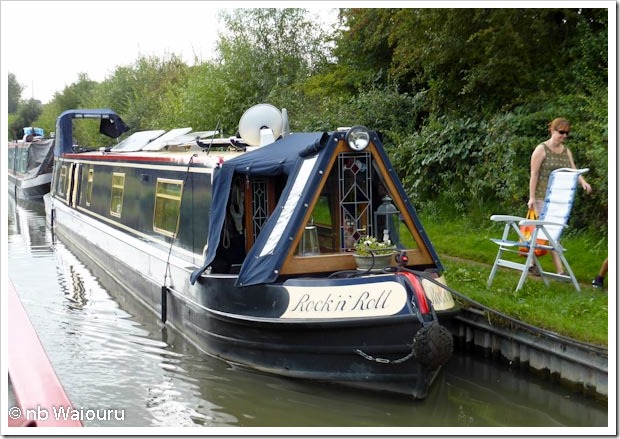 Only time for a very brief conversation with Kev and I did point out their old boat Forevermore was moored two boats in front!
Only time for a very brief conversation with Kev and I did point out their old boat Forevermore was moored two boats in front!






















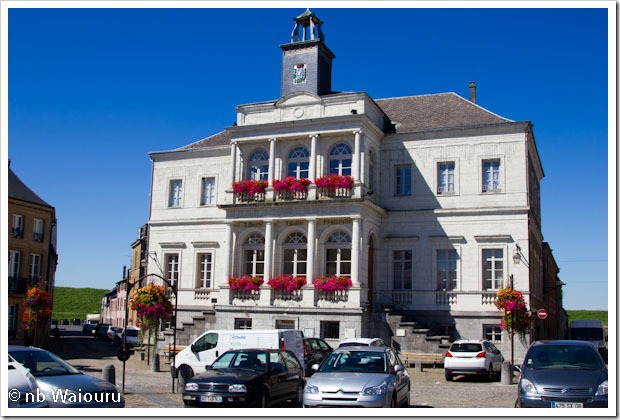
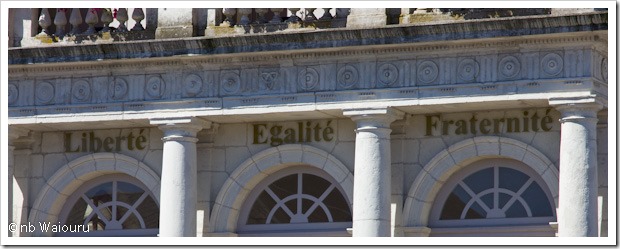 Nothing particularly unusual about the church on the opposite side of the square,although the covered market looked interesting.
Nothing particularly unusual about the church on the opposite side of the square,although the covered market looked interesting.









